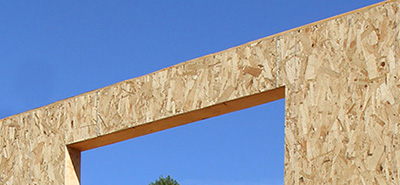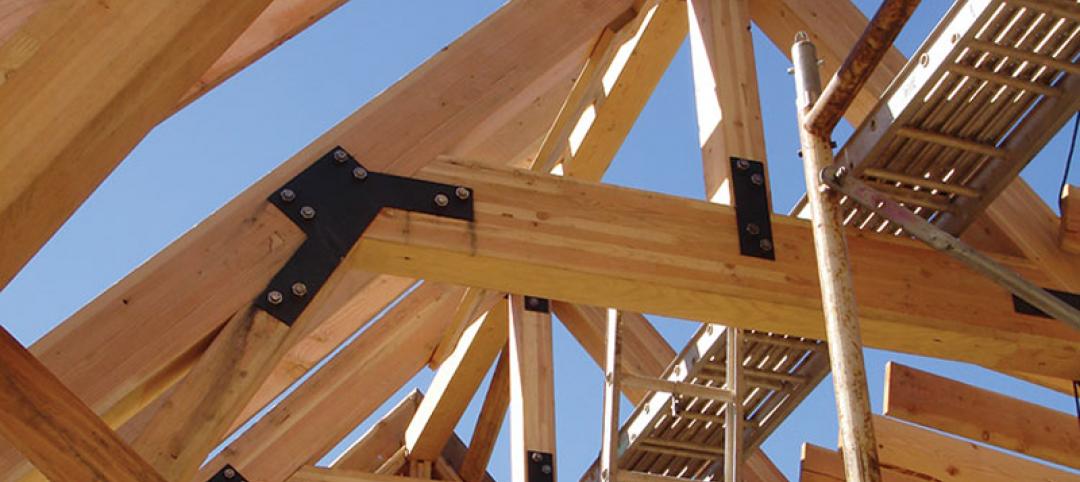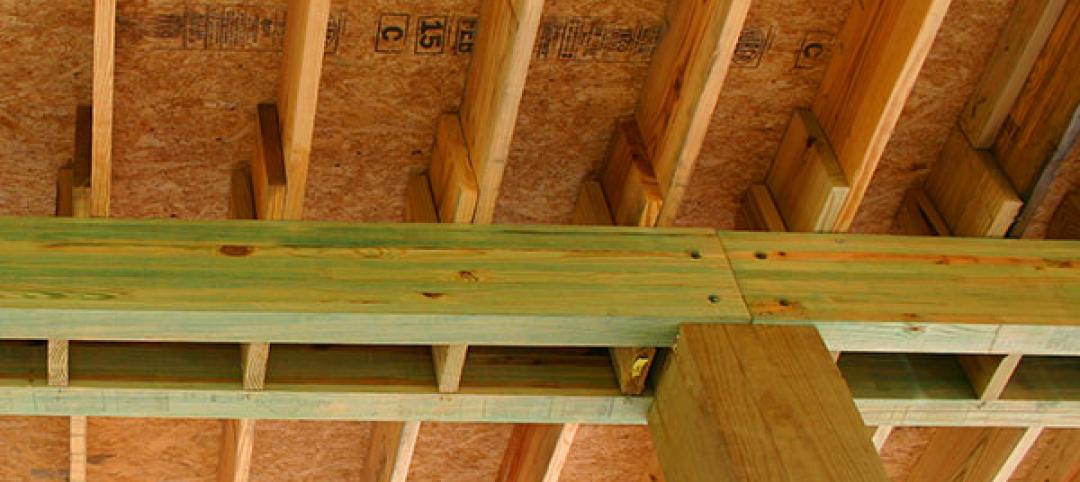Wood structural panel sheathed shear walls and diaphragms are the primary lateral-load-resisting elements in wood-frame construction. As wood-frame construction is continuously evolving, designers in many parts of the U.S. are optimizing design solutions that require the understanding of force transfer between elements in the lateral load-resisting system.
Options for Shear Walls With Openings
The U.S. building codes provide three solutions to walls with openings. The first, often referred to as the “segmented shear wall method,” ignores the contribution of the wall segments above and below openings and only considers the full-height segments in resisting lateral forces. The second is the “perforated shear wall method,” which accounts for the effects of openings in the walls using an empirical reduction factor.
The final method is “force transfer around openings” (FTAO). Much engineering consideration has been given to this topic and excellent examples have been developed. But very little test data have been collected to verify various rational analyses. Typically, walls that are designed for force transfer around openings attempt to reinforce the wall such that it performs as if there was no opening. Generally, increased nailing in the vertical and the horizontal directions, as well as blocking and strapping, are common methods used for the reinforcement around openings.
FTAO holds a couple of advantages over segmented shear walls: more versatility because it allows for narrower wall segments while still meeting the height-to-width ratios and, often, fewer required hold-downs.
FTAO Techniques
There are three techniques that are most commonly used to predict force transfer around openings: drag strut, cantilever beam, and the Diekmann technique. The drag strut technique is a relatively simple rational analysis that treats segments above and below the openings as drag struts. This analogy assumes that the shear loads in the full-height segments are collected and concentrated into the sheathed segments above and below the openings.
The cantilever beam technique treats the forces above and below the openings as moment couples, which are sensitive to the height of the sheathed area above and below the openings.
The Diekmann technique, named for the California structural engineer who developed it, assumes that the wall behaves as a monolith and internal forces are resolved by creating a series of free body diagrams. Although the technique can be tedious for walls with multiple openings, many engineering offices have developed spreadsheets or software based on the method. A known limitation of this technique is that when the height above the opening is small, the resolved shear forces become quite large, resulting in the apparent overstressing of the wood structural panel sheathing.
APA, the USDA Forest Products Laboratory, and the University of British Columbia conducted a joint research project to evaluate the variations of walls with pier widths that meet code-prescribed limitations. Using a series of 12 wall configurations, the study examined the internal forces generated during testing and evaluated the effects of size of openings, location of openings, size of full-height piers, and different construction techniques by using the segmented method, the perforated shear wall method, and the Diekmann method.
Results and Recommendations
The results of the study showed that there is a wide range of predicted forces among the FTAO methods that were considered for this study. The variations result in some structures being either over-built or less conservative than the intended performance objective.
The results of the measured versus predicted strap forces determined that the drag-strut method was consistently unconservative; so while it’s the easiest to implement, it is the least conservative of the three methods. On the opposite end, the cantilever beam method was found to be consistently ultra-conservative, leading to potential for over detailing of walls to resolve the force transfer around openings. The Diekmann method, and the similar SEAOC (Structural Engineers Association of California) method, provided reasonable agreement with measured strap forces.
In the meantime, APA is working with the research team on a Phase II study that will help further refine APA’s FTAO recommendations. The study will expand the initial research, in accordance with the Diekmann method, to provide the strap forces for a range of openings that may be used for designing walls with openings.
The publication “Joint Research Report: Evaluation of Force Transfer Around Openings,” Form M410, and others are available through the Designers Circle website, www.apawood.org/designerscircle. Sign up now for free access to timely information, technical resources, continuing education, and recommendations for innovative wood-frame construction.
More from Author
Karyn Beebe | Nov 11, 2016
Value engineering brings Santa Barbara apartments back on track
When framing estimates for a new apartment complex in Rialto, California, came in too high, a savvy developer decided to have the project value engineered. A switch to glulam and wood-framed shear walls got the project back in the black.
Karyn Beebe | Dec 7, 2015
Compelling conversations about wood: Engineered wood as expressive design
This installment features a wide-ranging discussion that reveals how a mix of engineered wood products lend themselves to expressive design — and what’s blocking today’s designers from fully embracing this aesthetic.
Karyn Beebe | Sep 17, 2015
Compelling conversations about wood: coastal environments
Architect Greg Mella and APA’s Karyn Beebe have a frank and far-reaching discussion about the tangibles and intangibles of using wood in corrosive environments—and beyond.
Karyn Beebe | Nov 5, 2014
How to maximize affordability and sustainability through all-wood podiums
Wood podium construction takes an age-old material and moves it into the 21st century.










